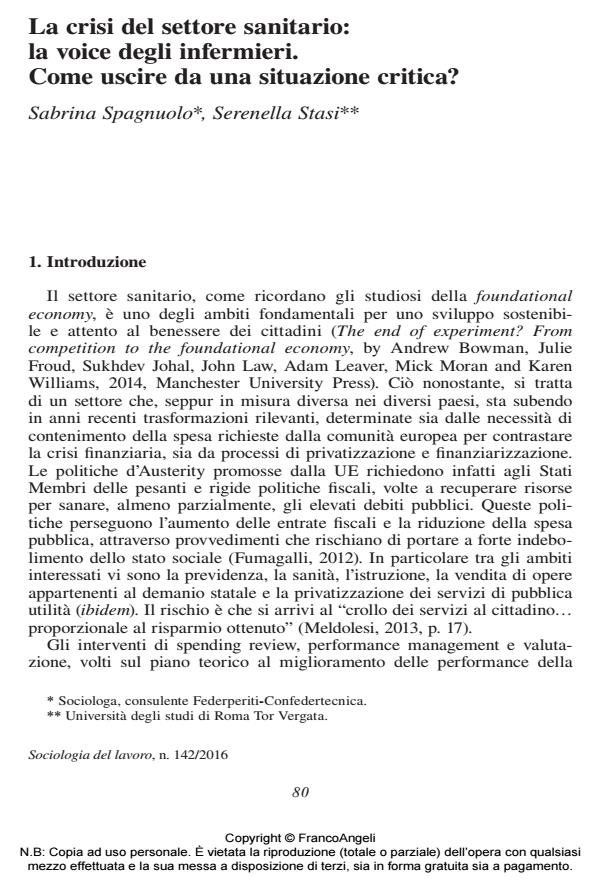The crisis in the health sector: the voice of nurses. How to get out of a critical situation?
Journal title SOCIOLOGIA DEL LAVORO
Author/s Sabrina Spagnuolo, Serenella Stasi
Publishing Year 2016 Issue 2016/142
Language Italian Pages 18 P. 80-97 File size 158 KB
DOI 10.3280/SL2016-142005
DOI is like a bar code for intellectual property: to have more infomation
click here
Below, you can see the article first page
If you want to buy this article in PDF format, you can do it, following the instructions to buy download credits

FrancoAngeli is member of Publishers International Linking Association, Inc (PILA), a not-for-profit association which run the CrossRef service enabling links to and from online scholarly content.
The Italian health care system is currently in a state of transformation and difficulties, due to the increase in the number of users and performance requirements. Moreover, there is a simultaneous and progressive reduction of the available resources, due to the need to limit government spending. The cuts in public spending have significantly affected the health workers context, and in particular had an impact both on the recruitment rates, and the contractual conditions of the nurses. Indeed, the policies of spending review affect directly and indirectly the quality of the care services provided, and the life conditions of health workers. The present paper aims to provide an exploratory study on the topic, adopting innovative techniques of analysis of in-depth interviews with nurses and care coordinators employed at the Santa Lucia Foundation in Rome.
Keywords: Outsourcing, quality of care, foundational economy, nurse, health policies, automatic analysis of textual data
- Unequal Youth Migrations: Exploring the Synchrony between Social Ageing and Social Mobility among Post-Crisis European Migrants Simone Varriale, in Sociology /2019 pp.1160
DOI: 10.1177/0038038519858044
Sabrina Spagnuolo, Serenella Stasi, La crisi del settore sanitario: la voice degli infermieri. Come uscire da una situazione critica? in "SOCIOLOGIA DEL LAVORO " 142/2016, pp 80-97, DOI: 10.3280/SL2016-142005